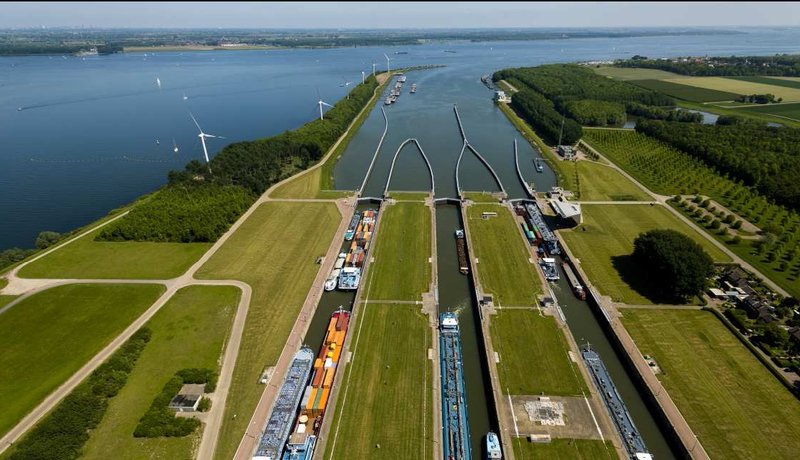The Volkerak locks are a complex of three locks for parallel commercial shipping, four drainage sluices and a yacht lock, located in the Volkerak dam between the Hollands Diep and the Volkerak near Willemstad. The Volkerak locks are the busiest and largest inland navigation lock complex in Europe.
The waterway is an important link in the Schelde-Rijn connection and is CEMT class VIb. Around 115,000 commercial vessels and 45,000 recreational vessels pass through the locks each year.
However, the Volkerak locks also form the largest bottleneck in the Schelde region’s waterway network and there is no real alternative route on the Rijn-Schelde corridor to bypass this bottleneck.
In order to avoid the need to build a 4th chamber to meet the waiting time criterion of 30 minutes on average, a planning study has identified precautionary measures to accelerate the current levelling process. There is a third opening in the ebb chamber of the lock, which is currently equipped with a slide without a drive. With the installation of the drive and the commissioning of the third gate, the levelling process can be accelerated and results in a direct gain in travel time in each lock cycle. If the lock gates are also opened at a 20 cm drop, additional travel time savings are expected.
The main objective of the project is to speed up the locking process in the existing three commercial lock chambers. This is achieved by successfully implementing the following optimisations:
– Installing and commissioning 3rd door operators on all ebb gates at the outer head and reserve gates put into operation;
– Adjusting the drive of all ebb doors at the outer head and reserve doors so that the doors can be opened with a greater decline (20 cm);
– Fit a new or reconditioned spring buffer to all outer ebb doors and reserve doors.
The great challenge of the project is twofold: on the one hand, to carry out the work in a controlled manner, in coordination with regular maintenance contractors and a subsidiary contractor at the lock complex, and on the other hand, to cause as little hindrance as possible to shipping, which means that the work will cause a maximum delay of half an hour. In principle, work is planned in such a way that there is no delay.



